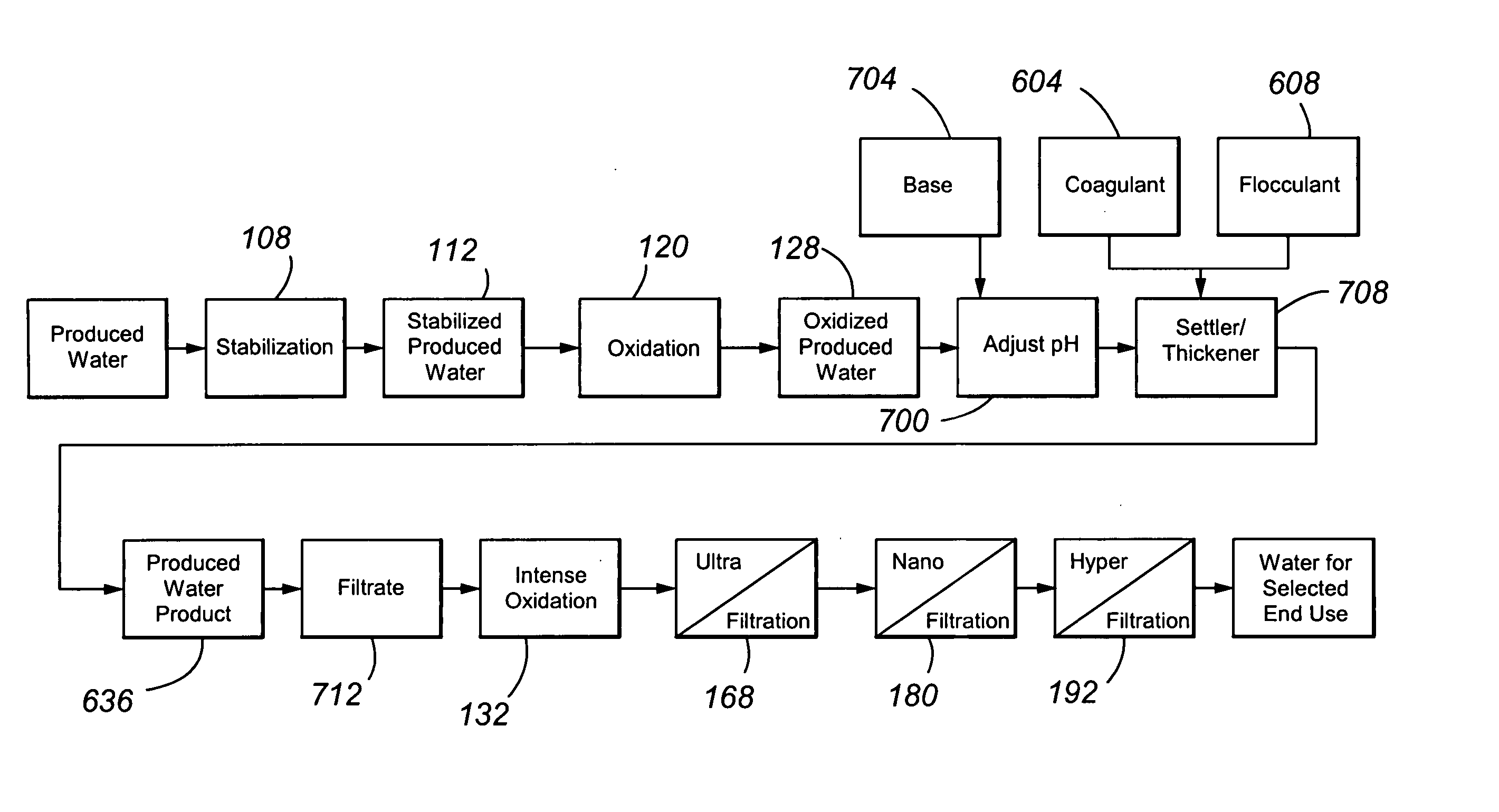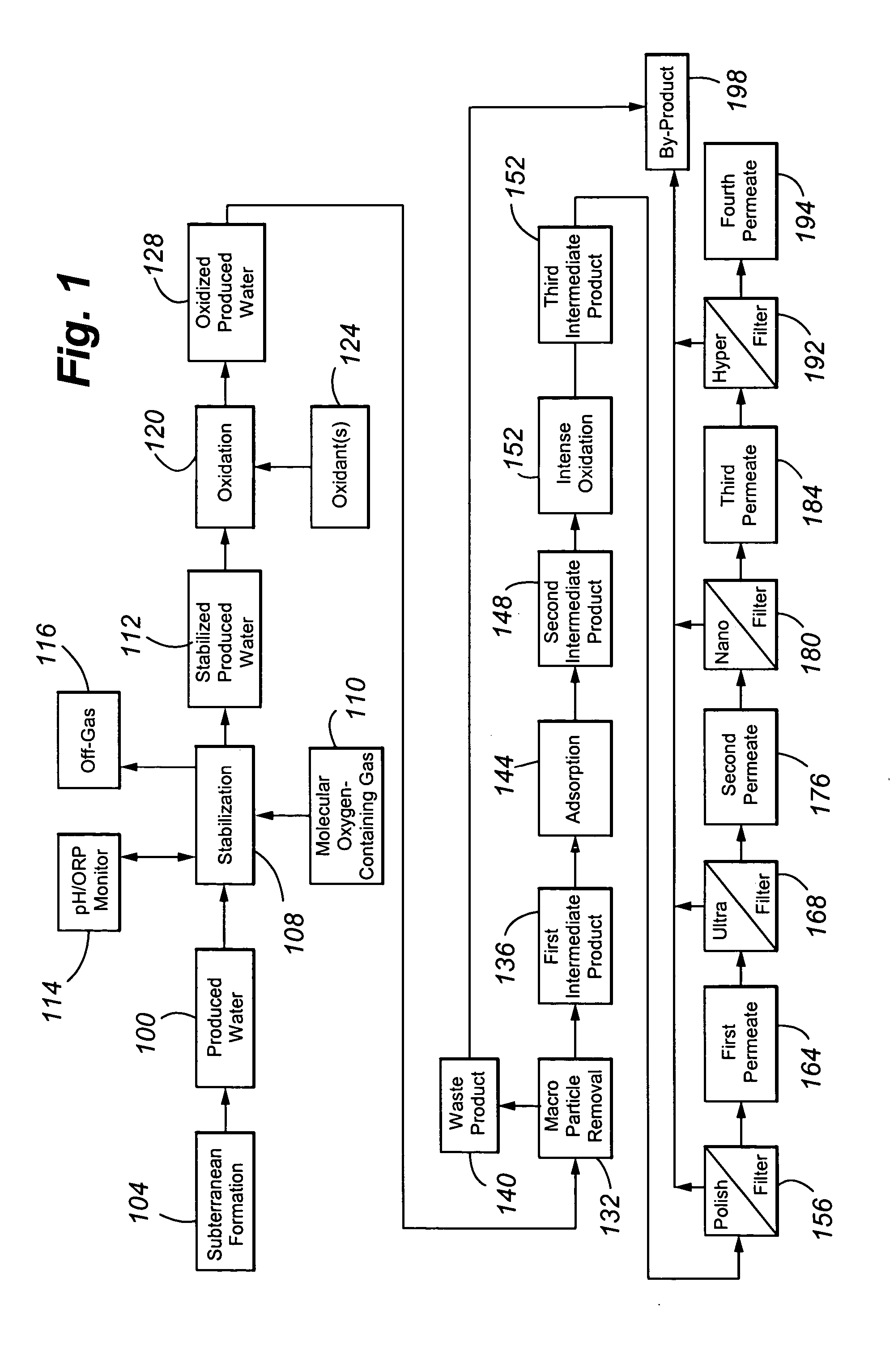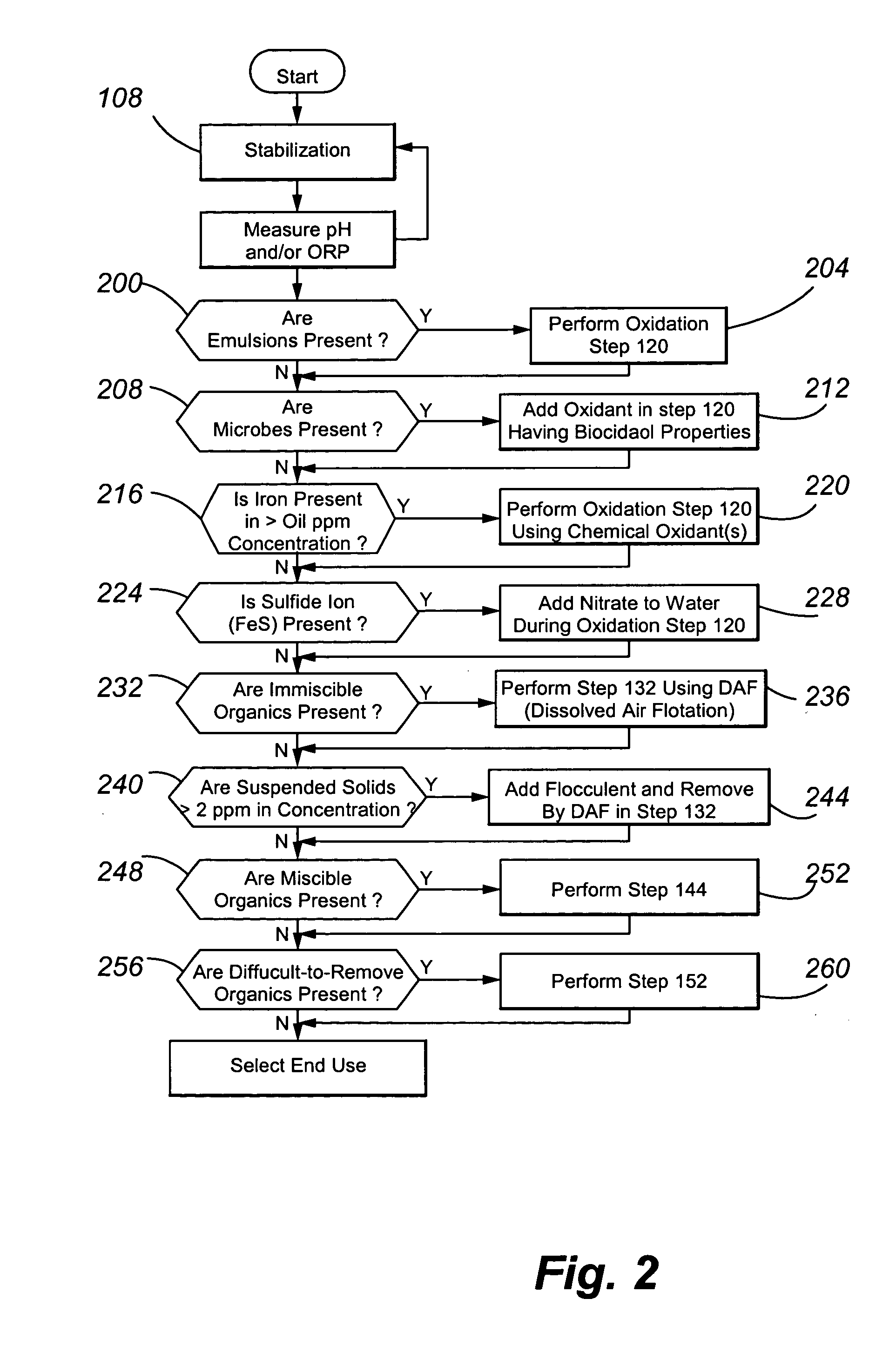Treating produced waters
a technology for producing waters and water treatment, applied in the field of water treatment, can solve the problems of affecting the quality of water produced by boreholes, affecting the use of surface land and water waste, and affecting the operation of social licenses, etc., and achieves the effects of reducing the amount of more expensive intense oxidants, low cost, and high capacity process
- Summary
- Abstract
- Description
- Claims
- Application Information
AI Technical Summary
Benefits of technology
Problems solved by technology
Method used
Image
Examples
Embodiment Construction
[0056] The process of the present invention is a produced water treatment method in which industrial process feed waters are defined and purified waters generated by a sequence of treatments that, in aggregate, define a “baseline water treatment” train for the removal of contaminants and production of beneficial end use waters. End use waters are generally in compliance with federal clean drinking water standards and are used for a wide variety of uses including revegetation of well sites, fire protection, drilling and workover operations, process cooling, road maintenance, stream bed makeup and groundwater aquifer recharge, landscape irrigation of golf courses, city parks and the like, livestock watering, wildlife habitats, and crop irrigation. All or parts of the treatment train can be used on an as-required and optional basis to achieve defined water quality standards. The process of the present invention can integrate the evolving social demand for conservation of resources with...
PUM
| Property | Measurement | Unit |
|---|---|---|
| standard reduction potential | aaaaa | aaaaa |
| diameter | aaaaa | aaaaa |
| pH | aaaaa | aaaaa |
Abstract
Description
Claims
Application Information
 Login to View More
Login to View More - R&D
- Intellectual Property
- Life Sciences
- Materials
- Tech Scout
- Unparalleled Data Quality
- Higher Quality Content
- 60% Fewer Hallucinations
Browse by: Latest US Patents, China's latest patents, Technical Efficacy Thesaurus, Application Domain, Technology Topic, Popular Technical Reports.
© 2025 PatSnap. All rights reserved.Legal|Privacy policy|Modern Slavery Act Transparency Statement|Sitemap|About US| Contact US: help@patsnap.com



